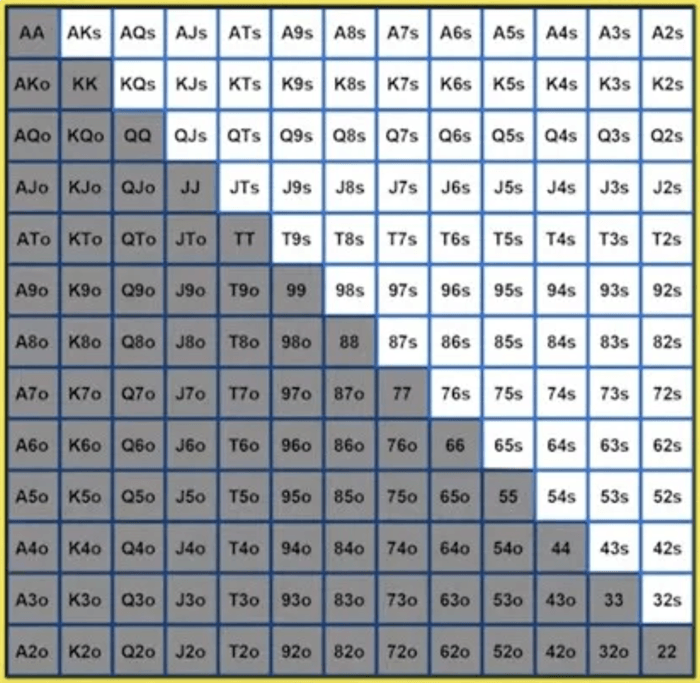888poker: Understanding Poker Ranges
Table Of Contents
In this Made to Play tutorial from 888poker, ambassador Ian Simpson gives some beginner tips on understanding poker ranges and how you should start thinking in ranges instead of specific hands.
Ranges vs. Specific Hands
Nowadays, poker players often discuss ranges instead of specific hands, and Simpson explains exactly what this means.
When a player raises on the button, we don't have enough information to put them on one exact hand. Instead, we have to make an educated guess at all of the hands that they're going to play this way.
You'll also hear players say, "I put you on a pair," before making a dubious fold or dubious call for their tournament life. Without an amazing live tell, we cannot be that specific. Our opponents surely will have pairs when they jam preflop, but they will also have a myriad of other hands.
Introducing the Hand Matrix
If you've researched ranges at all, then you'll have undoubtedly seen something like the hand matrix below.

This diagram helps us visualize all possible starting hands in Texas Hold'em. It may look a little daunting at first, but with some experience, it will become second nature.
The unshaded side shows all of the suited hands. The pairs run across the diagonal, with the rest being the offsuit hand combinations. Getting familiar with reading this chart is mandatory if you want to start thinking about ranges instead of specific hands.
Put the Matrix to Work
Once you're familiar with reading the matrix, it's time to put it to work. In this example, the button has raised, and we can have a good guess at what their range will look like.
They will probably open all of the pairs, all of the offsuit AxXx. They will open Kx6x offsuit plus, Qx8x plus, Jx8x plus, 10x8x plus, 9x8x offsuit and 8x7x offsuit. It's also likely they'll open a wide range of suited hands, such as 4?3? (suited). The only suited hands you could probably discount from the button range here are 3?2? to 10?2?, along with 9?4? and 7?3? to 9?3?.
Once you put all this information together, you can start formulating a plan on how to proceed in the hand.
Splitting Your Ranges
Sometimes, it's important to split your ranges. In our example, we call in the big blind with J?10? and check when the flop comes 9?7?2?. Again, we don't have enough information to put our opponent on one specific hand. We know roughly what hands they've raised with preflop from the chart we made earlier. Now, we can use that chart to pinpoint which hands they might be betting.
For example, we can imagine our opponent is always betting aces here. So, on our chart, we could color the AA box red. However, maybe we think they'll always check their offsuit eight-seven hands and can color that in green. By having all of the hands colored in, we can get a visual aid on what their range might look like. Sometimes, a box may contain both red and green, meaning there are times when your opponent may mix in checks and bets with the same hand. If we think they check pocket nines 25% of the time, we can shade in a quarter of the 99 box green and then fill the rest with red.
This is to show two different strategies with different frequencies are being used for that hand.
Narrow Your Opponents Range
Each action a player takes, be it checking, betting or raising will give us information about their range. So as the hand progresses, the range of hands we can put them on becomes narrower and narrower, further down the streets.
If the big blind calls your preflop raise, we can approximate their range. When they call a continuation bet on A-7-2, we eliminate a portion of that range. When they call your turn bet on the J?, we can eliminate more hands from their range again. When we get to the river, and they check, although they started with a very wide range, we've narrowed it down quite significantly following their flop and turn actions.
Visualizing this in the hand matrix can really help you decide what to do on the river.









